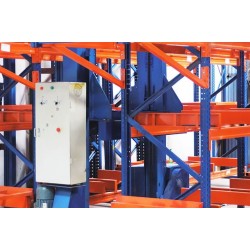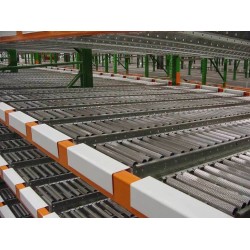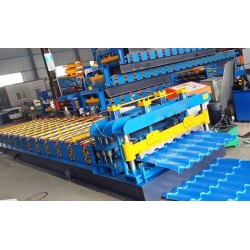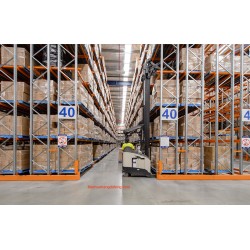Conveyor belt, conveyor belt
Conveyors are durable and reliable components used in automated distribution and warehousing. Combined with computer controlled pallet handling equipment, this allows for more efficient retail, wholesale and manufacturing distribution. It is considered a labor-saving system that allows large volumes to move quickly through a process, allowing companies to ship or receive higher volumes with smaller storage space and with less labor costs.
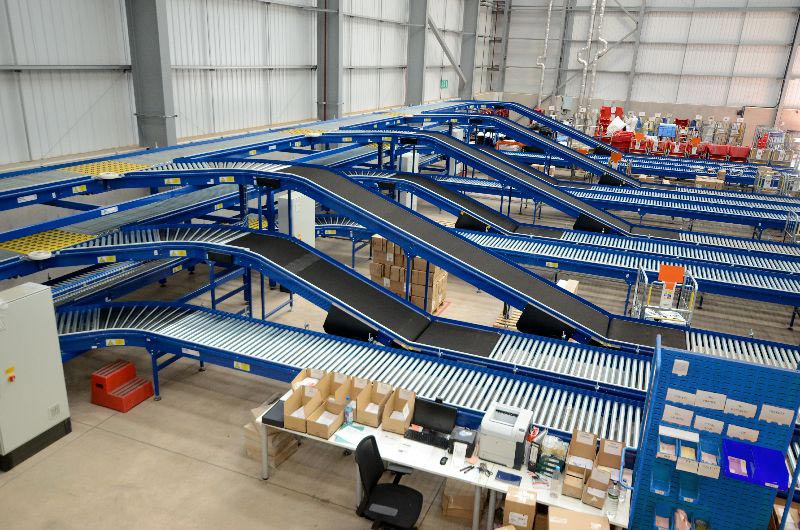
Conveyor system
Article content (Click to quickly view)
Introducing CONVEYOR – CONVEYOR BELT
A conveyor belt is the transport vehicle of a conveyor system (often shortened to conveyor belt). A conveyor racking system is one of many types of conveyor systems. A conveyor system consists of two or more pulleys (sometimes called drums), with an endless loop carrying the medium—the conveyor belt—that cycles them. One or both pulleys are powered, moving the belt and material on the front belt.
The supported pulleys are called drive pulleys while the unused pulleys are called idler pulleys. There are two main types of industrial conveyors; Those in general material handling such as moving boxes along the inside of a plant and bulk material handling such as those used to transport large volumes of resources and agricultural materials, for example like grain, salt, coal, ore, sand, overburden and more.
Rubber conveyor belts are often used to convey items with irregular bottom surfaces, small objects falling between the rollers (e.g. sushi conveyor bars), or bags of product that could leak between the rollers.
- Belt conveyors are generally quite similar in construction consisting of a metal frame with rollers at either end of a flat metal bed. The belt is wound around each roller and when one of the rollers is powered (by an electric motor), the belt slides over the sturdy metal frame, moving the product.
- In heavy use applications, the beds on which the belts are pulled up are replaced by rollers. The rollers allow weight to be transferred as they reduce the amount of friction created by heavier loads on the belt. Conveyor belts can be manufactured with curved sections using tapered rollers and curved belts to convey product around a corner.
- These conveyor systems are commonly used in postal sorting offices and airport baggage handling systems.
- A sandwich conveyor uses two conveyors, face to face, to firmly accommodate the items being carried, making inclined and even running vertical elevators achieved.
Belt conveyors are the most commonly used conveyors because they are the most versatile and least expensive. The product is conveyed directly on the belt so that both regular and irregularly shaped objects, large or small, light and heavy, can be transported successfully. These conveyors should use only the highest quality premium belt products, which reduces belt tension and results in less maintenance for tension adjustments. Belt conveyors can be used to transport products in a straight line or through changes in elevation or direction. In certain applications, they can also be used to accumulate static or cartons.
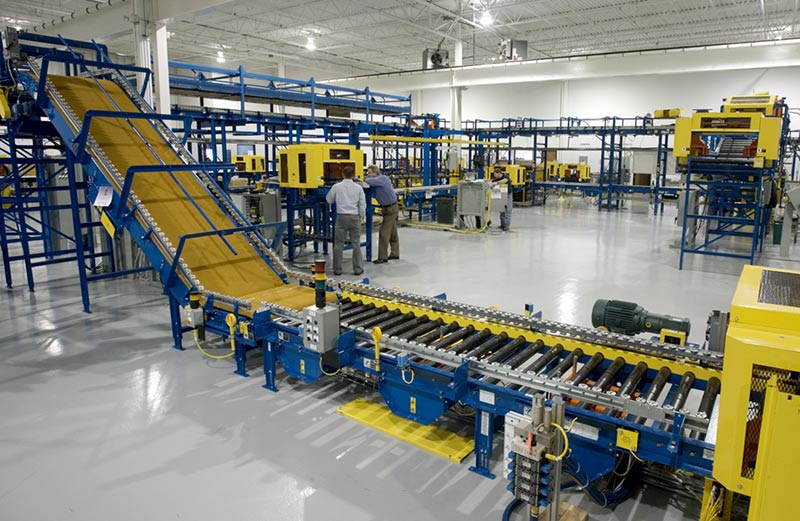
Realistic model of conveyor belt
Lineshaft roller conveyor
A roller conveyor or shaft conveyor is, as its name suggests, powered by a shaft below the roller. These conveyors are suitable for light applications up to 50 kg such as cardboard boxes and tote boxes.
Mechanism of action
A single shaft runs under the rollers that run the length of the conveyor. On the shaft are a series of spools, one for each roller. An elastic polyurethane o-ring belt runs from a spool on a powered shaft to each roller. When the shaft is powered, the o-ring acts as a chain between the tube and the roller causing the shaft to rotate.
The rotation of the rollers pushes the product along the conveyor belt. The shaft is typically driven by an electric motor that is often controlled by an electronic PLC (programmable logic controller). PLC electronically controls how specific parts of the conveyor system interact with the products being conveyed.conveyor rack,homemade conveyor,roller conveyor,conveyor rack,industrial conveyor, rubber conveyor belt, pvc conveyor belt, conveyor belt manufacturing,
Advantages of conveyor belts
The advantages of this conveyor are smooth operation, easy installation, moderate maintenance and low cost.
Axle conveyors are also extremely safe for people to work around because the elastic straps can stretch and won't hurt any fingers caught underneath them. Furthermore, the rolls will slide and allow the rollers to stop moving if clothes, hands or hair get caught in them.

Chain conveyors have many outstanding advantages during use
Additionally, because the spools are slightly loose on the shaft, they act like sliding joints when the products are required to accumulate (stop moving and colliding with each other. That is, stack up). With the exception of soft bottom containers such as cement bags, these conveyors can be used for virtually all applications.
Disadvantages of conveyor belts
A disadvantage of a roller conveyor is that it can only be used to convey products with at least three rollers, but the rollers can be as small as 17mm in diameter and as close together as 18.5mm. For items shorter than 74mm, conveyor systems are often used as an alternative.



